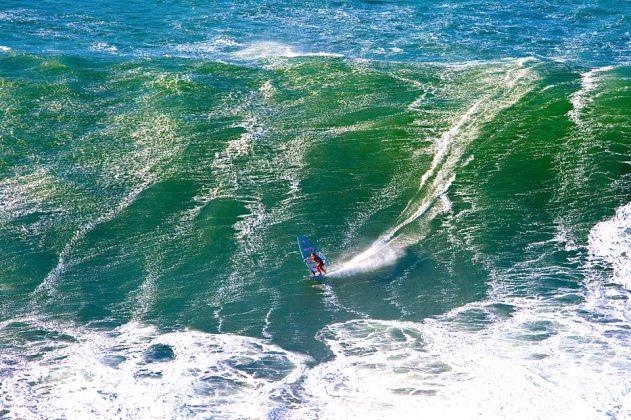Words Finn Mullen // Photo David Olsthoorn
This article was originally published in the November/December 2016 issue.
“ I must go down to the seas again, to the lonely sea and the sky,
And all I ask is a tall ship and a star to steer her by,
And the wheel’s kick and the wind’s song and the white sail’s shaking,
And a grey mist on the sea’s face, and a grey dawn breaking.
I must go down to the seas again, for the call of the running tide
Is a wild call and a clear call that may not be denied;
And all I ask is a windy day with the white clouds flying,
And the flung spray and the blown spume, and the sea-gulls crying.
I must go down to the seas again, to the vagrant gypsy life,
To the gull’s way and the whale’s way, where the wind’s like a whetted knife;
And all I ask is a merry yarn from a laughing fellow-rover,
And quiet sleep and a sweet dream when the long trick’s over.”
John Masefield, 1878 – 1967.
Masefield’s longing for the sea, his desire to feel the salt and the spray of a windy day, ‘the wild call’ are themes that resonate with windsurfing and we explore our sport’s connection to the saline in this issue. What is it about the brine that inspires such passion, need and ‘fever’? Sailors often talk of being ‘married’ to it, the challenge of such an ever changing environment will always appeal to our adventurers or maybe it is more visceral, physical even? Welsh surfing legend and Gower windsurfing pioneer, Paul ‘PJ’ Jones is an accomplished waterman who confessed to me once that “When I haven’t been in the (sea) water a few days, I miss the flush of it in my face, nose, the taste on my lips, I’ll get in for a swim just to feel it again, even in winter, it’s like a drug.” Graham Ezzy muses on the nature of our addiction this month in his excellent ‘Sea Mandala’ piece, documenting his own personal highs, lows and eventual enlightenment as he searches for inspiration to ‘break the rote’. Graham sagely notes that, “Windsurfing in itself is the ultimate expression of newness because it is so damn hard to learn.”
In my education for a career at sea, one moment stands out. “Have you noticed what all your lecturers have in common?”, quizzed the master mariner with a wry smile. “Beards?, rosy cheeks?… big bellies?” – my class replied awkwardly in collective ignorance. “No!” – he laughed heartily. “They all like to tell stories!, haven’t you noticed, sailors love to tell stories!”
Few stories in windsurfing are more heart warming than our feature ‘The magic of Moulay’ in this issue. Can windsurfing change lives? Yes and positively so is the answer as we look at the transformation of a Moroccan village and one of its sons thanks to our sport and a chance encounter. “If I hadn’t found windsurfing, life for me would have been very different, I would have been a fisherman like my father and grandfather; that is a hard life.” says the story’s protagonist, Abderazaq Labdi, who’s serendipitous meeting with a benevolent tourist might inspire you to donate equipment rather than sell it on ebay. The payback may not be as fiscally immediate but think of it as a long term investment – our sport becomes richer in character thanks to sailors like Abderazaq, giving is always more life stimulating than receiving and in 5 years time you’ve buoyed the second hand market when that person you introduced to the sport comes back looking to buy their own kit – that sounds like a good deal to us!
Being in the right place at the right time and having “an all-round background in windsurfing” was the deal breaker for John Skye when he was appointed sail designer for RRD and he tells us this month about his transition from professional sailor to working in the industry in ‘A design for life.’ For such a talented wave sailor you may be surprised to learn that John Skye spent the first 5 years of his windsurfing life on a lake. Making that passage from inland to coastal waters is the subject of Harty’s piece this issue, ‘Oh I do like to be beside the seaside’, where he gives advice for making those tentative first steps into the sea. Encouraging us to embrace fear, as “This whole endeavour is surely about stepping out of your comfort zone”.
Distinctly well outside the comfort zone, ‘where the wind’s like a whetted knife’ is the theme of John Carter’s story, ‘The big chill!’, as he documents a battle against the elements by a group of hardy Cornish sailors and their tips for winter sailing. At the other end of the comfort spectrum, Leon Jamaer lives ‘La Dolce Vita’ in his travel story this month as he enjoys the ‘the vagrant gypsy life’ to sample the salt water and culinary delights of Tuscany, Italy. Seafarers love having their own vernacular, ‘Jack speak’ to give it its correct terminology in their register. At times, windsurfers, particularly racers, seem to speak in their own tongue; we try to decode some of the mysterious terms and abbreviations with our ‘Slalom speak’ feature this month.
For ‘a merry yarn from a laughing fellow-rover’ and in keeping with this month’s ocean theme, expert wordsmith, Peter Hart, muses on the power of open waters in “Deep blue respect”. Peter, a vastly experienced sailor, writes with veneration of his workplace, “The sea, with its vastness, its ebb and flow, its history – folkloric and recent – produces a primeval reaction in many people. In windsurfing, while we launch into black seas in the depths of mid winter, tweaking the nose of danger and generally rejoicing in our alpha male and female-ness, what we’re actually doing most of the time is ponsing around its fringes.”
The power of the sea is the greatest lesson we can learn and keep at the forefront of our minds as windsurfers. It gives us humility, vitality and ‘a sweet dream when the long trick’s over’. It might be addictive, corrosive at times, but in my opinion, there is no sweeter infection than ‘Sea Fever’!
PHOTO Finn Mullen gets his sea fever fix at the infamous break of Aileens, beneath the cliffs of Moher in county Clare, Ireland.


